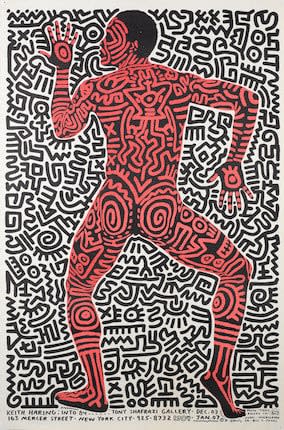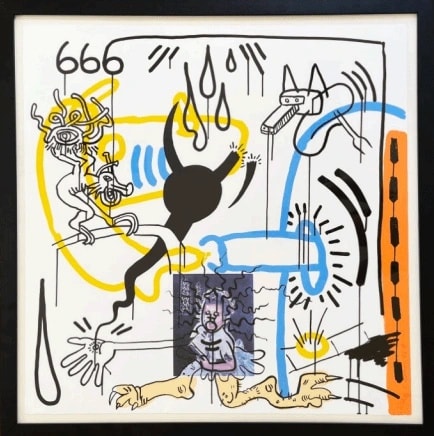The team at Hidden Gallery Brighton were thrilled to open our latest exhibition, 'Pop Art x Hidden Gallery' last week, and the response so far has been fantastic! From a Warhol Cow, to Roy Lichtenstein's instantly recognisable 'As I Opened Fire' triptych, the graphic lines and punchy colours of Pop Art are right at home in Brighton's vibrant North Laine. One artist who has been garnering particular attention is the icon of 1980s New York City street culture - Keith Haring.
The son of an engineer and amateur cartoonist, Keith Haring was born in Pennsylvania in 1958. Inspired at an early age by cartoon art, including the work of Walt Disney, Dr Seuss and Charles Schulz, Haring regularly worked on creative drawings alongside his father. His teen years then saw him take on a maintenance job at the Pittsburgh Centre for Arts, which granted him the opportunity for in-depth exploration of the works of Jackson Pollock and Mark Tobey.
It wasn't until Haring moved to New York, however, that Haring began to make strides in the development of his own artistic practice. In 1978, he enrolled at the School of Visual Arts, where he studied painting and semiotics and experimented with performance art. The early '80s saw the artist turn to New York City's subway, where he used blank billboard spaces as his canvas. This mass proliferation of his work quickly increased public recognition of his signature style of image-making.
From the very beginning of his career, it was clear that Haring intended for his work to defy the often-elitist tendencies of the art world, and to be accessible to all. He worked at an immensely rapid pace, creating paintings, prints, badges and magnets, to ensure that anyone who wanted to own his work would be able to.
"All kinds of people would stop and look at the huge drawing and many were eager to comment on their feelings toward it. This was the first time I realized how many people could enjoy art if they were given the chance. These were not the people I saw in the museums or in the galleries but a cross-section of humanity that cut across all boundaries".
Keith Haring
In 1986, Haring opened a store in Soho, which he called the 'Pop Shop'. Described by the artist as an extension of his subway works, the shop sought to break down barriers between high and low art. The shop was a huge success, and soon a second Pop Shop was opened in Tokyo by the filmmaking duo Kaz Kuzui and Fran Rubel Kuzui. The original store at 292 Lafayette Street stayed open until 2005, 15 years after Haring's death.
Alongside his efforts to make his art accessible to all, social activism formed a central pillar in Haring's body of work. From the gay rights and anti-apartheid movements, to drug safety campaigns, Haring was an avid campaigner who dedicated much of his work to speaking out on important social issues. The fourth piece in our slideshow, titled 'Free South Africa', was created by Haring as part of a widespread public drive to fight against the racially oppressive South African government at the time.
In the Autumn of 1988, Haring was diagnosed with AIDS, a moment which marked a significant shift in his body of work. He dedicated the imagery of his final years to sharing his experience with the illness, in the hope that it might generate awareness of its horrific impact. Haring passed away on the 16th February 1990 from AIDS-related complications. Though he was only 31 at the time of his death, his legacy lives on today and he is widely considered to be one of the greatest artists of the 20th Century.
Head over to Hidden Gallery Brighton through November to see the phenomenal work of Keith Haring alongside Andy Warhol, Robert Indiana and Roy Lichtenstein in 'Hidden Gallery x Pop Art'.
Any questions? We are happy to help. Call: 0117 279 6402 or send us a message now.






